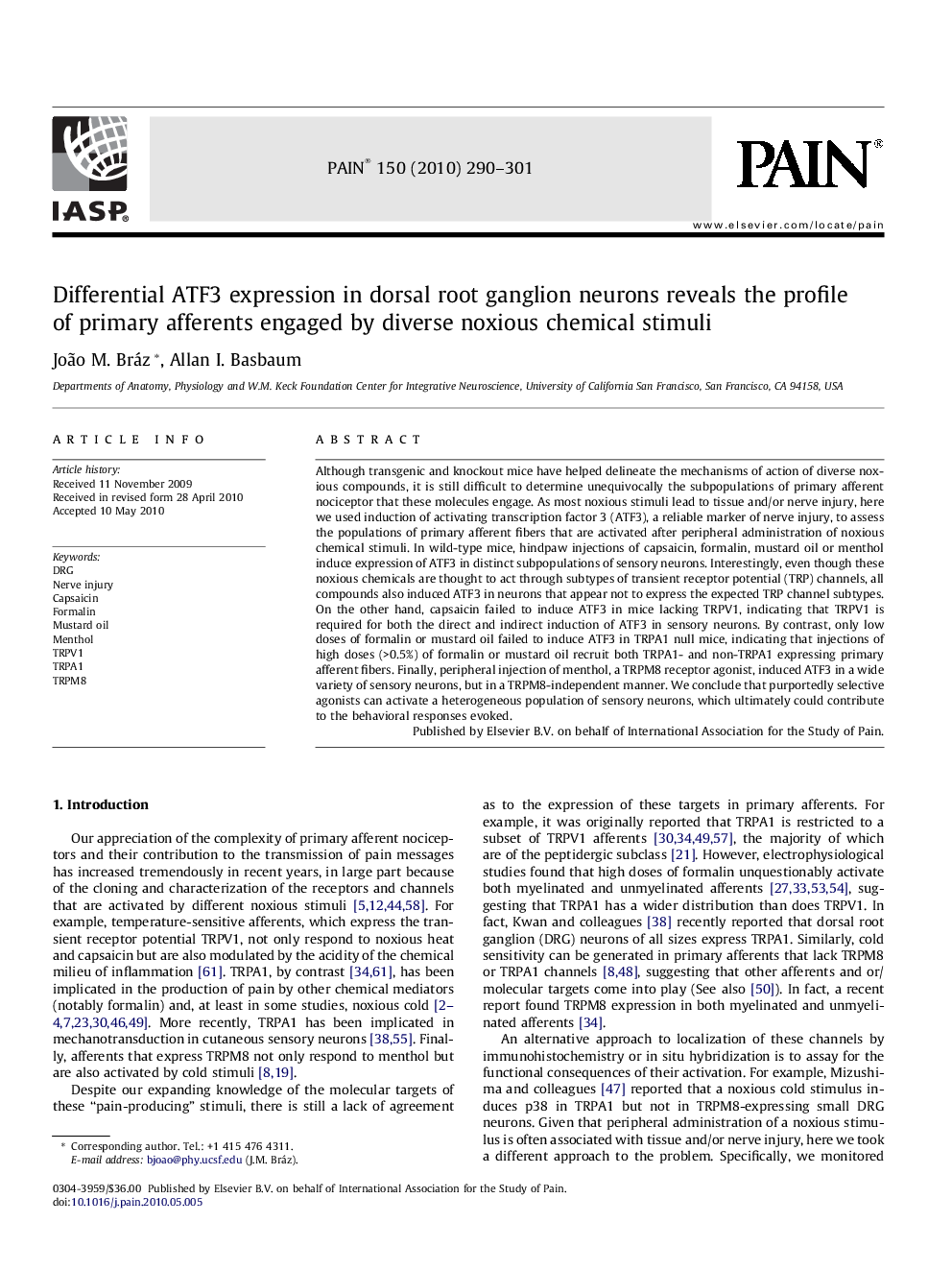| کد مقاله | کد نشریه | سال انتشار | مقاله انگلیسی | نسخه تمام متن |
|---|---|---|---|---|
| 914405 | 918396 | 2010 | 12 صفحه PDF | دانلود رایگان |
عنوان انگلیسی مقاله ISI
Differential ATF3 expression in dorsal root ganglion neurons reveals the profile of primary afferents engaged by diverse noxious chemical stimuli
دانلود مقاله + سفارش ترجمه
دانلود مقاله ISI انگلیسی
رایگان برای ایرانیان
کلمات کلیدی
موضوعات مرتبط
علوم زیستی و بیوفناوری
علم عصب شناسی
علوم اعصاب سلولی و مولکولی
پیش نمایش صفحه اول مقاله

چکیده انگلیسی
Although transgenic and knockout mice have helped delineate the mechanisms of action of diverse noxious compounds, it is still difficult to determine unequivocally the subpopulations of primary afferent nociceptor that these molecules engage. As most noxious stimuli lead to tissue and/or nerve injury, here we used induction of activating transcription factor 3 (ATF3), a reliable marker of nerve injury, to assess the populations of primary afferent fibers that are activated after peripheral administration of noxious chemical stimuli. In wild-type mice, hindpaw injections of capsaicin, formalin, mustard oil or menthol induce expression of ATF3 in distinct subpopulations of sensory neurons. Interestingly, even though these noxious chemicals are thought to act through subtypes of transient receptor potential (TRP) channels, all compounds also induced ATF3 in neurons that appear not to express the expected TRP channel subtypes. On the other hand, capsaicin failed to induce ATF3 in mice lacking TRPV1, indicating that TRPV1 is required for both the direct and indirect induction of ATF3 in sensory neurons. By contrast, only low doses of formalin or mustard oil failed to induce ATF3 in TRPA1 null mice, indicating that injections of high doses (>0.5%) of formalin or mustard oil recruit both TRPA1- and non-TRPA1 expressing primary afferent fibers. Finally, peripheral injection of menthol, a TRPM8 receptor agonist, induced ATF3 in a wide variety of sensory neurons, but in a TRPM8-independent manner. We conclude that purportedly selective agonists can activate a heterogeneous population of sensory neurons, which ultimately could contribute to the behavioral responses evoked.
ناشر
Database: Elsevier - ScienceDirect (ساینس دایرکت)
Journal: PAIN - Volume 150, Issue 2, August 2010, Pages 290-301
Journal: PAIN - Volume 150, Issue 2, August 2010, Pages 290-301
نویسندگان
João M. Bráz, Allan I. Basbaum,